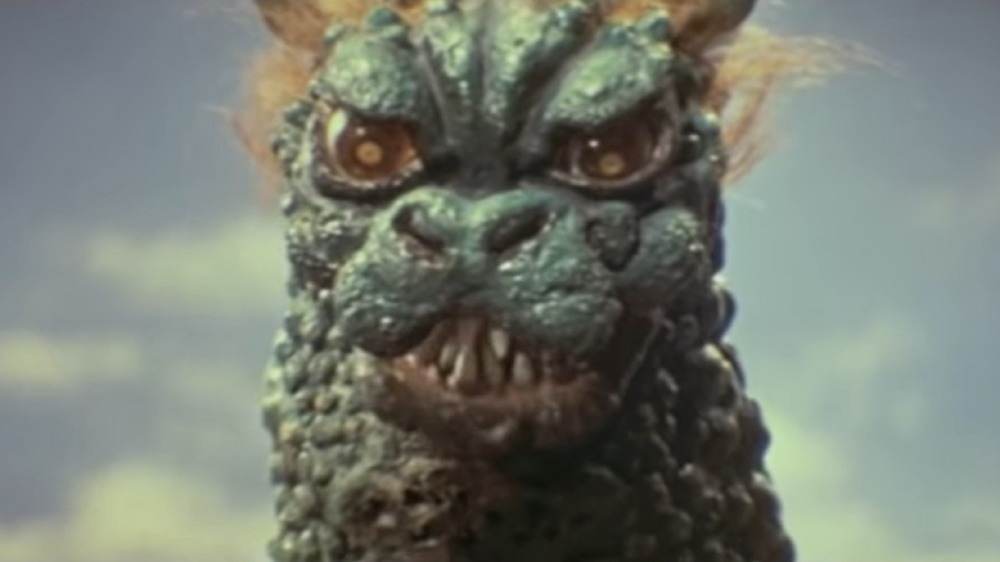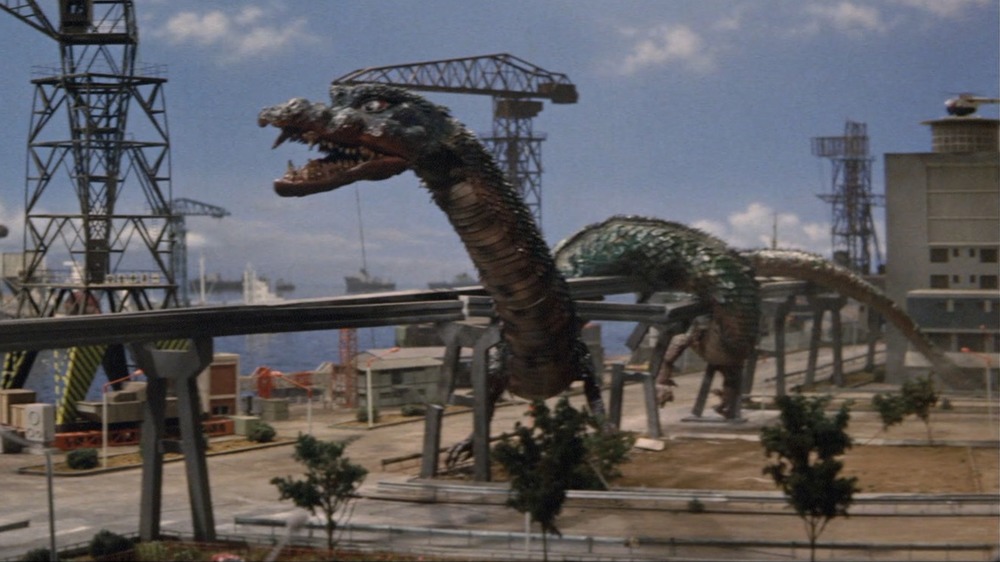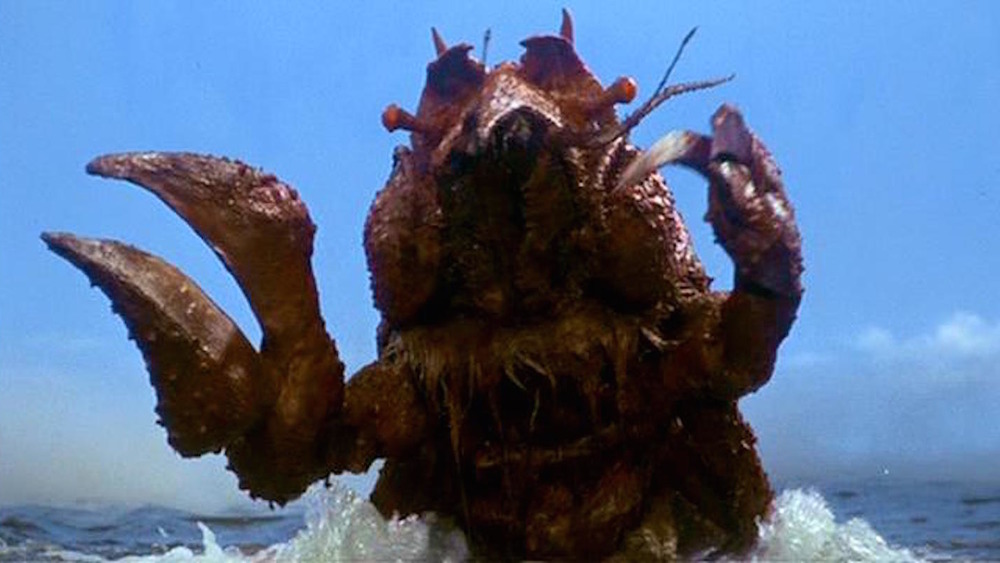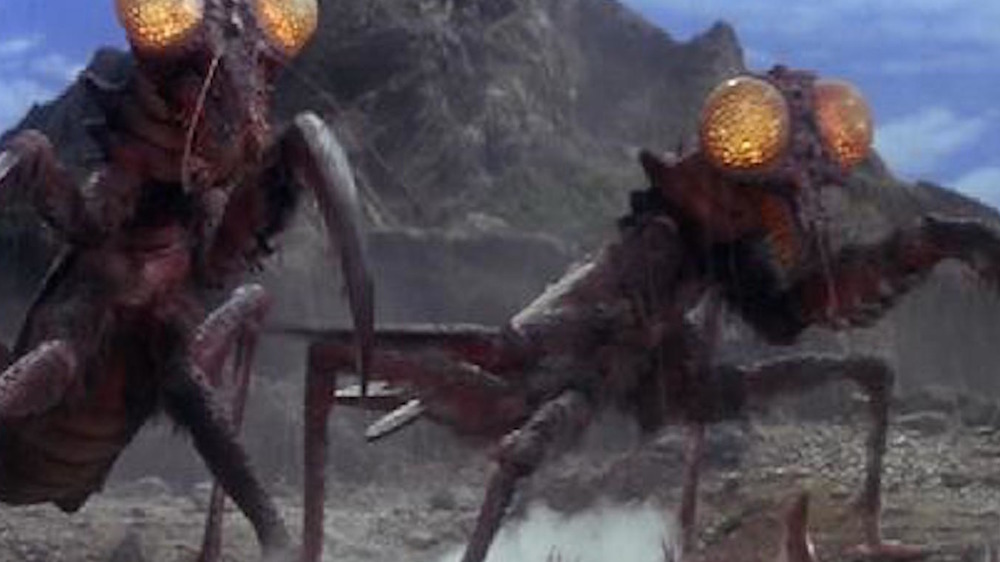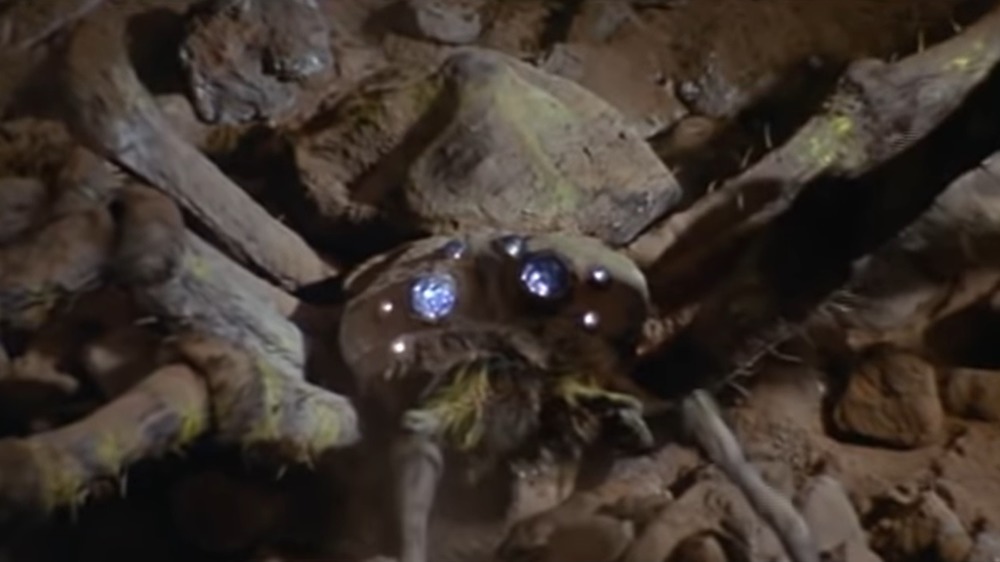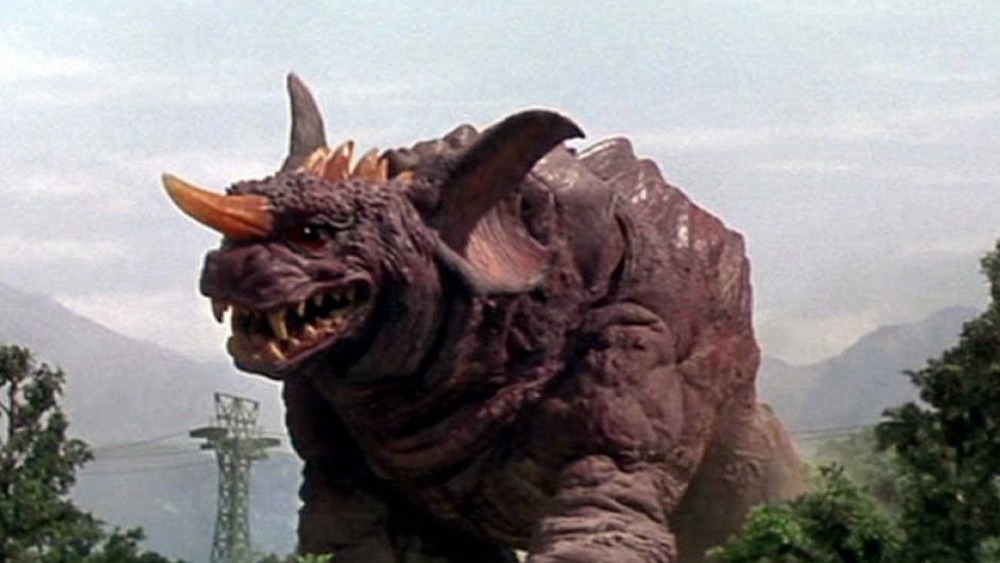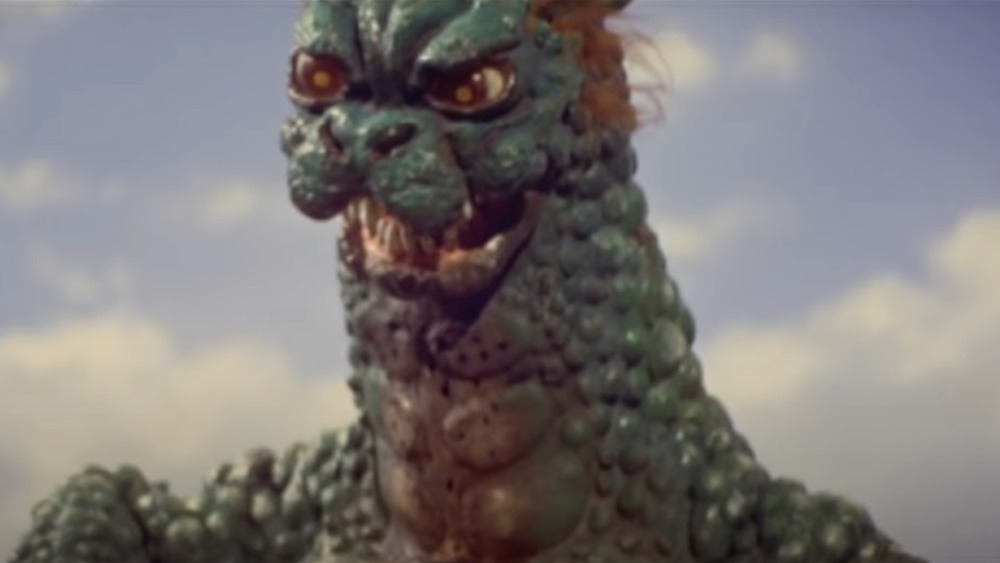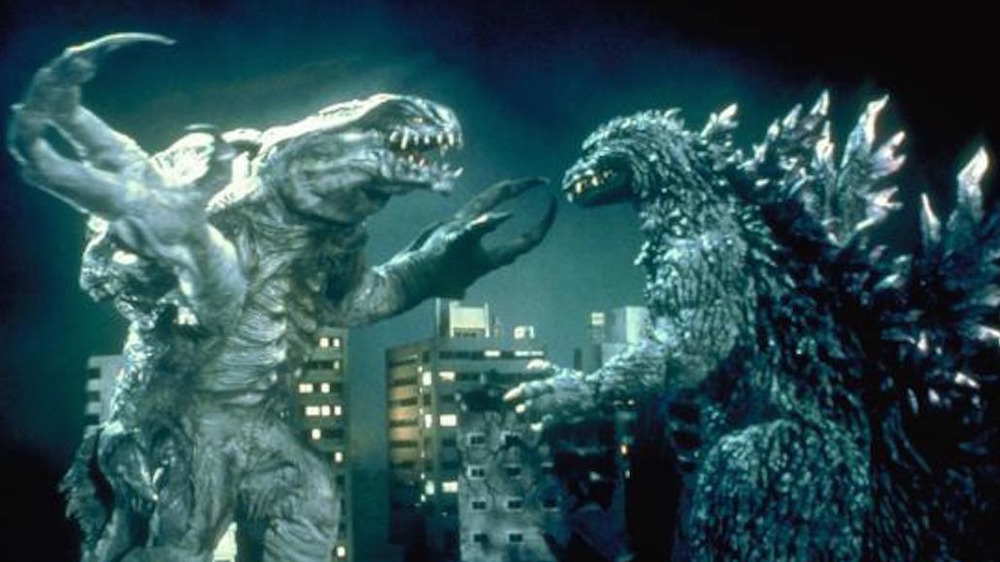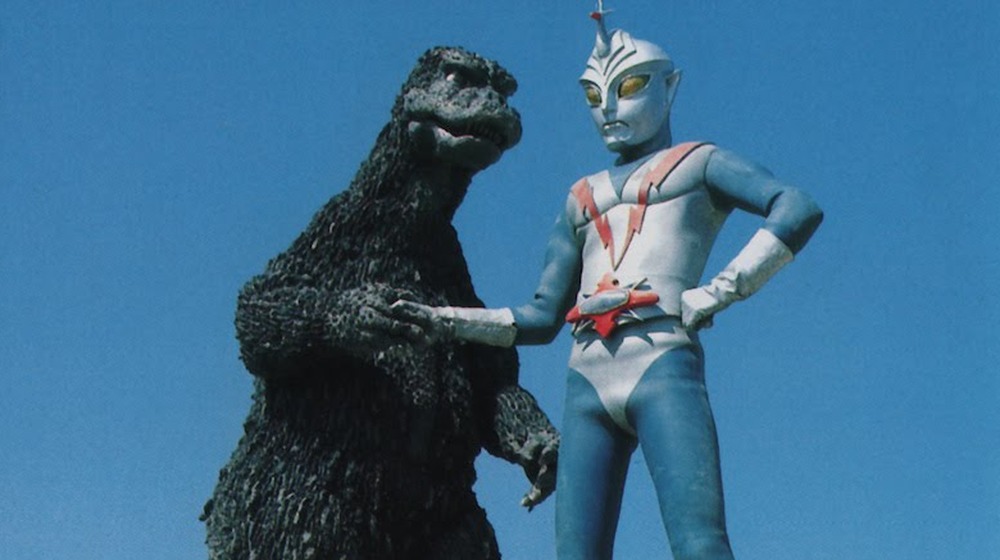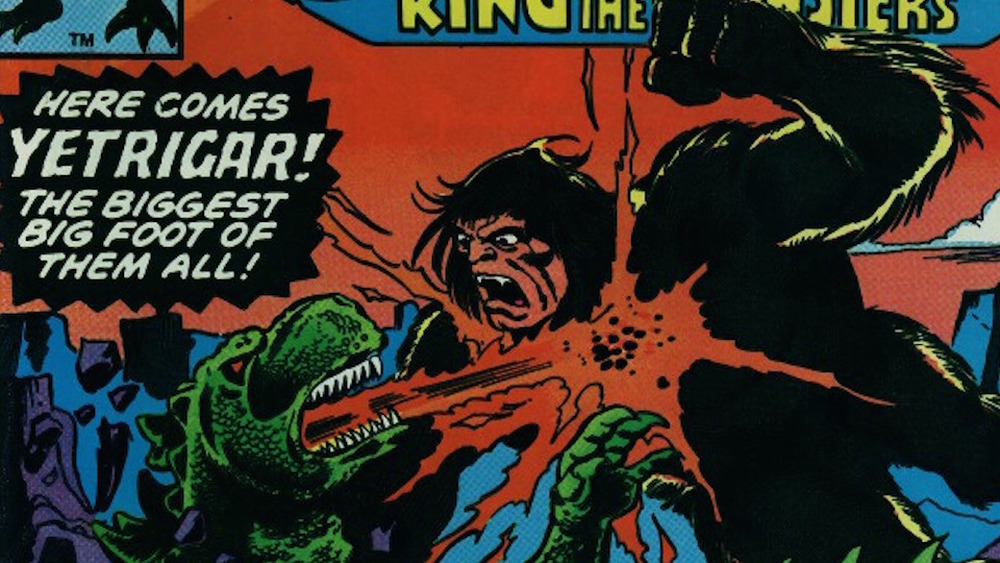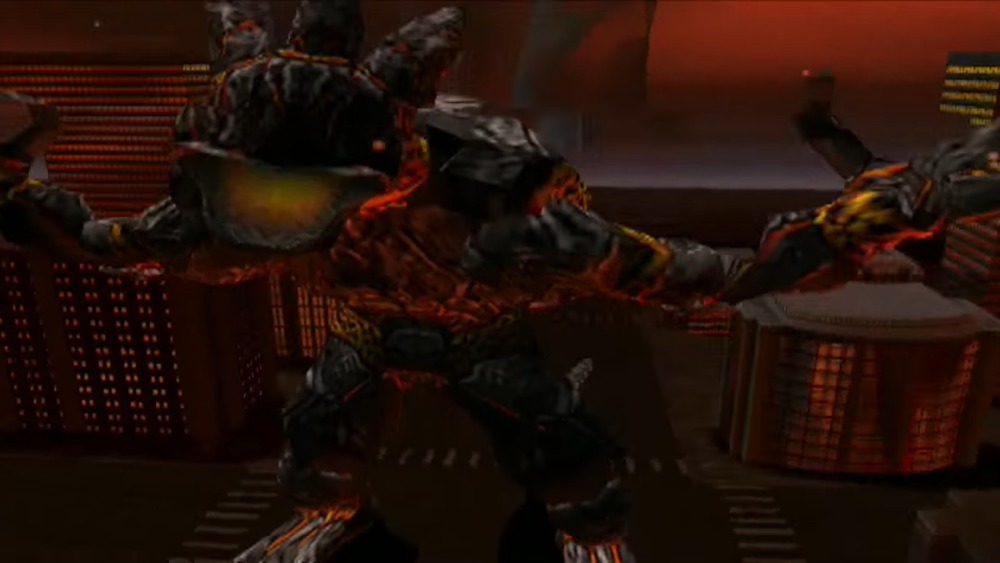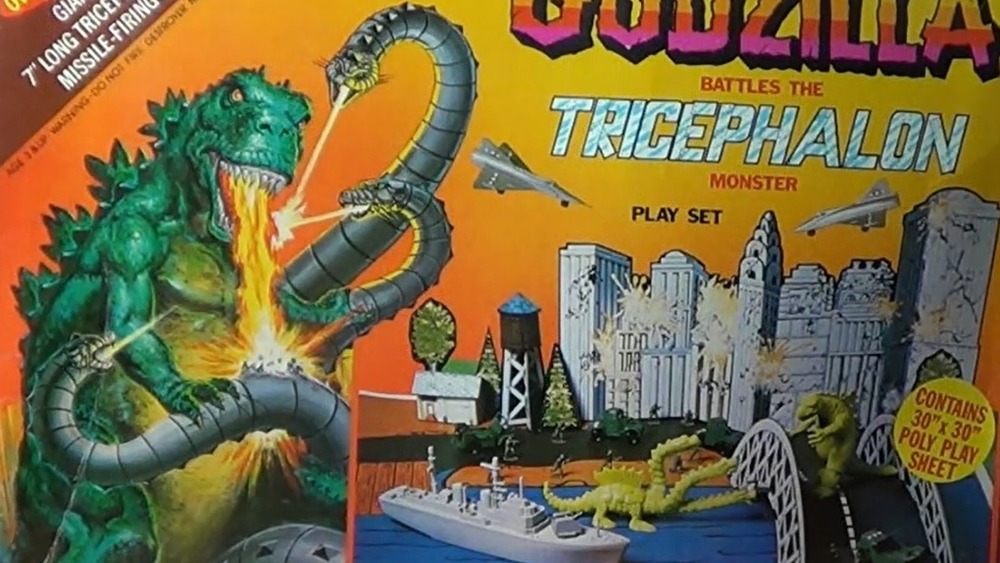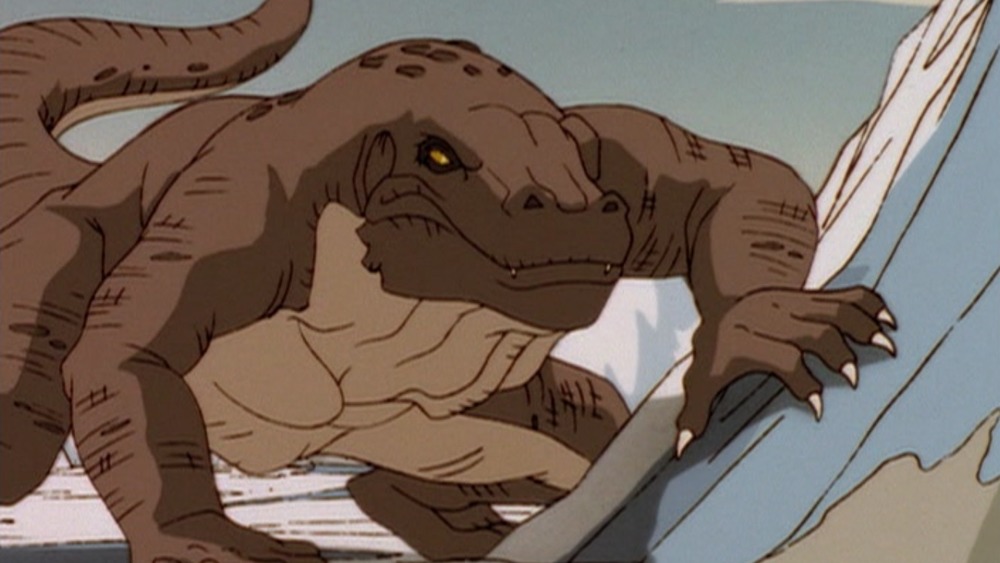Godzilla's Forgotten Friends And Foes
Like Frankenstein's monster, Dracula, and Freddy Krueger, Godzilla is a genre film icon whose popularity and longevity has translated beyond his fan base and become part of mainstream culture. But as kaiju diehards know, Godzilla isn't the only monster on the roster of Toho Pictures, which launched the franchise back in 1954.
Most moviegoers can name Toho's "Big Four" monsters –- Godzilla, the flying dinosaur Rodan, the insect god-monster Mothra, and King Ghidorah, the three-headed space dragon and the series' primary antagonist. But that's just scratching the surface when it comes to the creatures, aliens, and superheroes that have either fought against or with Godzilla over the course of his six-decade screen career, which is now one of the longest-running film franchises in movie history. So if you want to learn more about the big guy's lesser-known costars, buckle up as we travel to Monster Island and explore Godzilla's friends and foes across feature films, video games, TV, print, and more.
Warning — there are spoilers below.
Meet Manda, a sea dragon and second-stringer
A perennial background player in Toho's kaiju films for more than a half-century, Manda's long, serpentine body and facial horns and barbs suggest a connection to Japanese sea dragons of mythology and folklore. Manda's screen debut came in 1963's Atragon, but the snaky beast kept largely off-screen until the film's final third, where it tangled underwater with the flying submarine Gotengo.
Atragon is essentially Manda's most substantial film role. However, a land-dwelling, physically restructured version of the sea creature popped up five years later in the 1968 kaiju rally Destroy All Monsters, where it laid waste to London before teaming with Godzilla to tackle New York City (and in a scene trimmed from the theatrical release, the pair paused briefly to tussle with each other). Manda was then featured in an extended cameo in 2004's Godzilla: Final Wars, where it again battled the Gotengo before finding itself on the wrong end of a maser cannon. Though always the bridesmaid on film, Manda enjoyed more substantive appearances in numerous Godzilla-related video games and comic books, including IDW's Godzilla: Rulers of Earth.
Don't call Ebirah a shrimp
Ebirah was a colossal crustacean (described as either a shrimp, lobster, or crayfish) that guarded a South Pacific island in 1966's Godzilla vs. the Sea Monster, which was originally issued in Japan as Ebirah, Horror of the Deep. Though a considerable threat to anyone attempting to gain access to or leave Letchi Island, Ebirah's signature weapon — its elongated claws –- were no match for Godzilla, who simply tore off his opponent's pincers and sent the super shrimp back to the ocean depths.
Much of Ebirah's subsequent career at Toho seems to have been left in the planning stage. In Sea Monster, Ebirah was originally slated to fight King Kong, but American co-producers Rankin-Bass -– the stop-motion holiday animation specialists –- withdrew from the project, leaving Toho to replace the ape with Godzilla. Ebirah was also slated to appear in Destroy All Monsters, but the big lobster was eventually dropped from the script, and its brief turn in 1969's All Monsters Attack (aka Godzilla's Revenge) was simply recycled footage from Sea Monster.
Ebirah finally returned to the spotlight in Godzilla: Final Wars, though its appearance was anything but flattering. The creature's attack on an oil refinery was thwarted by the film's mutant soldiers, and a team-up with Hedorah from Godzilla vs. the Smog Monster was turned into slapstick, with Ebirah accidentally poking his sludgy partner in the eye before both were blown apart by Godzilla's atomic breath.
Pray you don't meet Kamacuras
Kamacuras was actually the name of three stupendous praying mantises that menaced both Godzilla and his offspring, Minya (or Minilla), in 1967's Son of Godzilla. The creatures -– impressive marionette creations by the film's special effects director, Sadamasa Arikawa (with supervision by Toho's legendary special effects designer, Eiji Tsuburaya) –- were first glimpsed as man-sized mantises on the remote Solgell Island before a radioactive storm caused them to grow to more than 50 meters in length.
Three king-sized Kamacuras, called Gimantis in the English-language dub of Son, then tormented the newly hatched Minya before Godzilla arrived to fry two of them with his atomic breath while the third was dispatched by the island's other monstrous arthropod inhabitant, the spider Kumonga. Single and multiple marionette Kamacuras also appeared briefly in All Monsters Attack and 1972's Godzilla vs. Gigan (aka Godzilla on Monster Island) before a CGI Kamacuras turned up in Godzilla: Final Wars. In this film, the creature was seen to possess the same camouflage abilities as real-life mantises –- not that it helped Kamacuras, as the insect was quickly sussed out by Godzilla and skewered on a transmission tower.
Kumonga is one of Godzilla's ickiest foes
Kamacuras wasn't the only insect bedeviling Godzilla, Minya, and the human stars of Son of Godzilla. Hidden in a rocky valley was Kumonga -– or Spiega, if you were watching the English language dub –- a 150-foot spider with an appetite for anything that crosses its path. Once awakened, Kumonga ensnared Minya and a Kamacuras in its thick, sticky web (which, unlike most spiders, jetted out from its mouth, not its spinnerets) and dispatched the mantis with its creepy, stabbing stinger.
Minya appeared next on the menu until Godzilla came to the rescue. The ensuing brawl was one of the film's best displays of special effects and, undoubtedly, one of its most challenging, as the Kumonga marionette required two to three technicians to operate the wires on each of its eight legs. Eventually, a combined blast of atomic breath from father and son brought down the spider, but it –- or a close relative — was back in 1968 for Destroy All Monsters, where it teamed with Mothra to coat King Ghidorah in webbing during the film's concluding battle royale.
Kumonga's final screen appearance to date was in Godzilla: Final Wars, where it displayed a new talent — a web that expanded from a single strand to a net. This did little to stop Godzilla, who simply grabbed hold of Kumonga's web and hurled him out of sight.
Baragon is the most versatile kaiju
One of the hardest-working monsters in Toho's stable of kaiju, the burrowing, flame ray-breathing dinosaur Baragon may not enjoy the star power of the Big Four, but the beast has appeared in numerous features and television series over the past half-century, though it's been incognito for some of those turns. Baragon made its debut in 1966's Frankenstein vs. Baragon (or Frankenstein Conquers the World, as it's known in the States) as a replacement for Godzilla, who was initially intended to face off against Toho's take on Frankenstein's monster before production changes necessitated a change-up.
Special effects director Eiji Tsuburaya then borrowed the suit and added new heads and various body armor plates to create different monsters for his Ultra Q and Ultraman TV series. Baragon then returned to Toho for 1968's Destroy All Monsters, though its screen time was limited. Why? Well, according to some accounts, it was due to the monster's most distinguishing feature — its long, floppy ears. Tsuburaya's special effects team was concerned that this particular aspect of the head design would make it difficult to execute the monster's showcase sequence, in which it tunneled under and destroyed the Arc de Triomphe in Paris, so Baragon was relegated to the background while Gorosaurus, a dinosaur from 1969's King Kong Escapes, got the big scene.
In the ensuing decades, Baragon remained a popular figure in countless Godzilla-related manga, novels, and video games, but it wouldn't return to feature work until 2001, when the creature, along with Mothra and King Ghidorah (recast as a hero for once), defended Japan against a rampaging Godzilla in Giant Monsters All-Out Attack.
Gabara is a Godzilla foe who's part monster, part bully, and all jerk
Gabara is the Nelson Muntz of Toho's roster of monsters –- a mean-spirited bully with a distinctive mocking laugh and a penchant for pounding on smaller creatures. He's featured in just one film, the truly eccentric All Monsters Attack (aka Godzilla's Revenge), and even that's not 100% real. As it turns out, he was part of a daydream about Monster Island concocted by the film's protagonist, Ichiro.
A latchkey kid plagued by a grade-school goon he nicknames "Gabara," Ichiro escapes from reality by imagining himself on Monster Island, where he's befriended by Godzilla's offspring, Minya. The pint-sized kaiju also has to contend with its own tormentor, similarly named Gabara, who's a reptilian/amphibian jerk of a monster with the ability to transmit an electric shock to his victims. With Ichiro's help and some tough-love encouragement from Godzilla, Minya is able to best Gabara, which gives Ichiro the strength to take down his Gabara in the real world.
After All Monsters Attack, Gabara turned up — its suit looking the worse for wear — in episodes of Toho's offbeat children's tokusatsu TV series Go! Godman and Go! Greenman.
Orga reminds you to watch what you eat
As Godzilla grew in power to a seemingly indestructible force of nature, some of his screen opponents tapped into his incredible mutated biology in order to create a means of defeating the creature. As a result, several monsters have been directly spawned from Godzilla's cellular structure. For example, there's the colossal plant monster Biollante in Godzilla vs. Biollante, the extraterrestrial clone SpaceGodzilla in Godzilla vs. SpaceGodzilla, and Orga, a creature formed from DNA data stolen by alien invaders in Godzilla 2000: Millennium.
In that latter film, the overly complicated premise involves extraterrestrial visitors known as the Millennians that see Godzilla's regenerative properties as the key to adapting to Earth's environment and, eventually, overtaking the planet. The absorption of Godzilla's DNA allows the aliens to combine their form into a single, towering squid creature, which then undergoes a mutation into a hideously deformed replica of Godzilla called Orga. Since it possesses both Godzilla's strength and indestructibility, the new creature is able to not only fend off the King of the Monsters but also grow large enough to attempt to swallow his opponent. This proves to be a fatal mistake for Orga, who's blown to smithereens when Godzilla unleashes a nuclear pulse from inside his maw.
Zone Fighter is Godzilla's television friend
Toho's giant monster films began to falter at the box office during the 1970s, due in part to the wealth of science fiction and fantasy series on television like Ultraman (which, ironically, had been created by the company's special effects chief, Eiji Tsuburaya). So, moving its own fantasy and sci-fi titles to TV was the next logical step, and in 1973, the studio introduced the world to Zone Fighter.
Hewing to the template established by Ultraman and other similar series — good guy aliens fight city-wrecking monsters, robots, and extraterrestrials — Zone Fighter's heroic family of aliens battled an army of "Terror-Beasts," which involved one character morphing into the show's titular champion, the colossal Zone Fighter. And when things got tough, he would get an occasional assist from Godzilla. The King of the Monsters made his series debut in the fourth episode and would return for four additional episodes, including one that featured a face-off with his former (and future) big-screen foe, the cyborg bird-alien Gigan.
Zone Fighter also featured two guest villain shots by King Ghidorah, though surprisingly, the space dragon didn't take on Godzilla in either episode. Ghidorah was also one of the show's few monsters to escape being destroyed by Zone Fighter's Meteor Proton Cut or Slice Chop.
Yetrigar took on Godzilla and the Avengers
If the name of this giant man-beast isn't ringing a bell, that's because it never appeared in a Godzilla movie. Yetrigar was featured in Marvel Comics' Godzilla, King of the Monsters comic book, which ran from 1977 to 1979. And during the series' 24-issue run, writer Doug Moench and celebrated Incredible Hulk artist Herb Trimpe created an entirely new universe for the radioactive monster to trample, complete with a fresh, terrifying rogues' gallery.
Some of his opponents came from Marvel's existing bullpen. Godzilla battled the Avengers, the Fantastic Four, Spider-Man, and even Devil Dinosaur and Moon Boy over the course of the series. Others, however, were created specifically for the title, like Yetrigar, a Sasquatch-styled behemoth freed from an icy tomb in Canada by atomic testing, which also boosted his height to over 100 feet. Godzilla battled the monster over the course of two issues before burying it alive in the Grand Canyon, but that wasn't the end of Yetrigar's Marvel run. The hairy creature would tangle with both the Avengers and their West Coast iteration in 1988 and 1989, respectively, before being transported to the super secret maximum security prison known as the Vault.
Obsidius shows up on the gaming side of Godzilla
The 2007 Nintendo Wii/Sony Playstation 2 game Godzilla: Unleashed offered players their choice of 20 (or more, depending on the platform) of Toho's monsters to operate in gameplay, and it added two new creatures designed specifically for the game itself.
One of them, a bipedal mutant monster called Obsidius that was created from magma and minerals, was included after being selected from a group of four possible kaiju by readers of IGN in a 2007 poll (a second reader poll chose a replacement for his original name, Magmouth). The faceless, single-minded creature was given a wide array of abilities, including a lava beam, high heat and energy tolerance, and mad skills at burrowing (though not in-game). And in the Playstation 2 version, Obsidius was also granted the ability to absorb some of the life force from his opponents.
Obsidius was the only new monster to appear in both the Wii and Playstation 2 versions of Godzilla: Unleashed, which also remains his sole showcase to date. And that's a shame because this bizarre creature is pretty awesome. Here's hoping will see him on the big screen someday.
Tricephalon Monster, come out to play
The three-headed amphibian mecha-monster Tricephalon –- whose armor-plated necks and torso presaged the cybernetic transformation of King Ghidorah in 1991's Godzila vs. King Ghidorah –- was the villain in Godzilla Battles the Tricephalon Monster, a playset issued by HG Games in 1979. Lucky owners could pit their 5-inch tall plastic Godzilla against the 7-inch Tricephalon Monster on a combination diorama/poly play sheet that depicted a waterfront city in ruins. The set also included 18 plastic soldiers and 18 civilians in various states of dismay, as well as two jets, an array of vehicles, and best of all (or worst, depending on your parents' concerns for your eyes), a destroyer that actually fired a missile!
The Tricephalon Monster was also featured on a huge, 100-piece jigsaw puzzle issued by HG in 1979 that reproduced the playset's chaotic cover art, which was created by prolific magazine and Marvel Comics artist Earl Norem. Today, both the playset and the puzzle are highly sought-after items by collectors of all things Godzilla.
Godzilla: The Series features a wild collection of friends and foes
Perhaps the best thing to come from the unfortunate, much-maligned 1998 Godzilla was Godzilla: The Series, an animated sci-fi adventure that ran for 40 episodes between 1998 and 2001. The show's Godzilla –- the sole surviving offspring of the one featured in the TriStar film –- was closer in both temperament and ability to the Toho kaiju, possessing both an aggressive attitude and the ability to spew an fiery atomic breath. The show also featured an impressive array of beasts for the junior Godzilla to fight, including the Loch Ness Monster, the Aztec feathered serpent Quetzalcoatl, and numerous mutated creatures, including giant squid, rats, bees, worms, snakes, bats, jellyfish, lizards of all types, and even a king-sized hummingbird that could spit acid!
The cartoon Godzilla also enjoyed a romance of sorts with another colossal lizard –- a giant Komodo dragon called Komodithrax –- and briefly attempted to play house with the creature and its giant egg before their love nest was spoiled by a giant turtle. It should be noted that the interloper was not Gamera.
